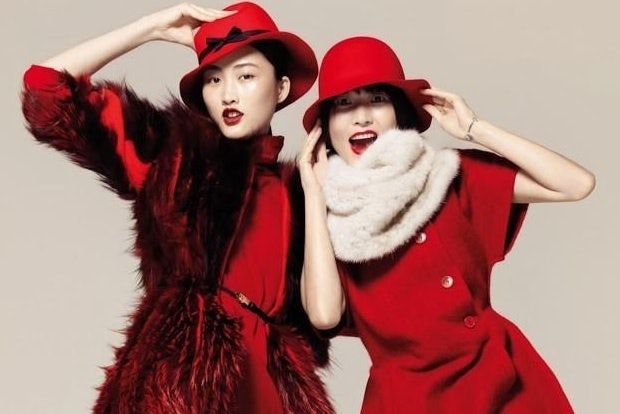While consumers in mature markets such as Europe and the United States are becoming “disillusioned” with luxury shopping, Chinese consumers are the most enthusiastic luxury shoppers in the world, finds a new Bain report.
According to the consultancy’s recent study of the global luxury market, Chinese consumers as a whole not only spend the most on luxury, but they also dominate the key consumer groups which are the most willing to spend on high-end goods.
Although China has only the third-largest group of luxury consumers worldwide after North America and Western Europe, it dominates the total amount of global luxury spending with 28 percent of the €217 billion market (US$294 billion), says the report. This amount is almost 10 percent higher than that of the Europeans and North Americans, who each contribute only 17 percent of total global luxury spending despite higher numbers of shoppers. Chinese consumers also have the second-highest spend per capita at €1,250 (US$1,699) per person, which is second only to Middle Eastern consumers’ €1,400 (US$1,902).
This discrepancy can be attributed to the fact that Chinese consumers make up two of the seven key “types” of global luxury consumers most happy to break out their pocketbooks for luxury, argues Bain.
Of these seven categories—conservative, opinionated, disillusioned, hedonist, omnivore, wannabe, and investor—Chinese consumers make up most of the “opinionated” and “omnivore” categories, which also happen to be the highest spenders and the biggest brand advocates.
The “omnivores” are mainly China’s newly wealthy who are just beginning to buy luxury, and are clearly loving every minute of it given their extravagant spending habits. These consumers, generally from China’s second- or third-tier cities, are the highest spenders of all seven groups, as well as the biggest “advocates” of brands, meaning they’re more likely to recommend products to friends. Naturally, they prefer to buy in-season items, and their top purchasing drivers are brand name and status.

Meanwhile, China’s increasingly sophisticated luxury consumers from first-tier cities such as Beijing and Shanghai comprise most of the “opinionated” segment, according to Bain. The second-highest spenders and brand advocates, these savvy, highly educated consumers care the most about exclusivity and quality when deciding on a purchase. Bain states that this group is made up of “connoisseurs” who have have the highest level of brand awareness and highest loyalty toward their preferred brands among all groups. They’re more likely to use technology such as tablet devices, and are highly influenced by their social networks and targeted communication.
According to this report, the growing sophistication of the “opinionated” luxury consumers in China’s first-tier cities is highly different from the “disillusionment” with luxury being felt by consumer groups in mature markets such as the United States, Europe, and Japan. While China’s sophisticated consumers are shifting their spending habits as they become more educated about products, the disillusioned consumers have become “detached and disinterested in traditional luxury values,” according to the report, and are interested the most in “products that last more than one season” when they do buy. The disillusioned make up 20 percent of both the European and North American markets, where they are the second-largest and largest group in each region, respectively. In Japan, the rate is even higher, taking up 25 percent of all luxury consumers. Meanwhile, only about 2 percent of China's luxury market is considered to be in this category.
That’s not to say that all groups are not represented in China. While the "omnivore" and "opinionated" groups combined make up about 61 percent of the total number of China's luxury consumers, the other four categories exist there as well: for example, the logo- and flash-obsessed “hedonist” that cares about outward ostentation makes up 12 percent of the group, says the report. Older, more “conservative” luxury buyers focused on quality, a solid brand name, and gifting take up 17 percent of the market, while hard-asset driven “investors," and middle-class, bargain-hunting “wannabes" make up 5 percent and 4 percent combined.

China's breakdown of luxury consumers by group. (Bain)
One more fascinating thing about this report: although the logo-obsessed, flashy, "hedonistic" luxury consumer is stereotyped as more typical in emerging markets,—especially China—the percentage for North America is identical to China at 12 percent, while it's actually higher in Western Europe at 19 percent.
The bottom line of the report is that although the global luxury market has tripled in less than 20 years, it’s becoming much more complicated as it expands. According to Bain, this means that luxury companies are going to have to “embrace the change” in the market and devote more effort to customer-insight practices, tailor-made strategies, and impeccable execution in order to reap the benefits of continued growth—much of which is coming from China.
